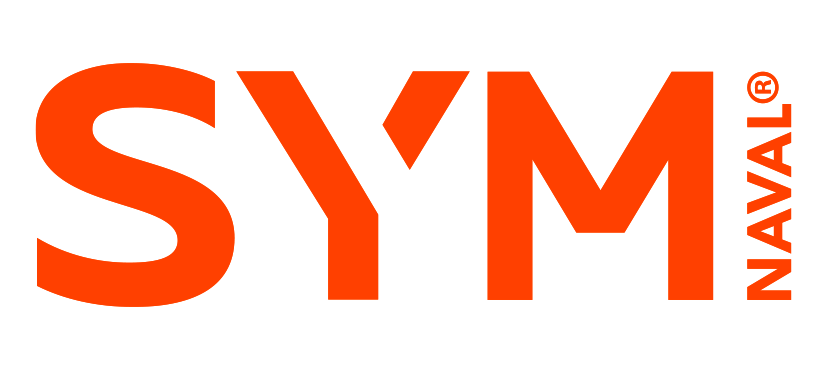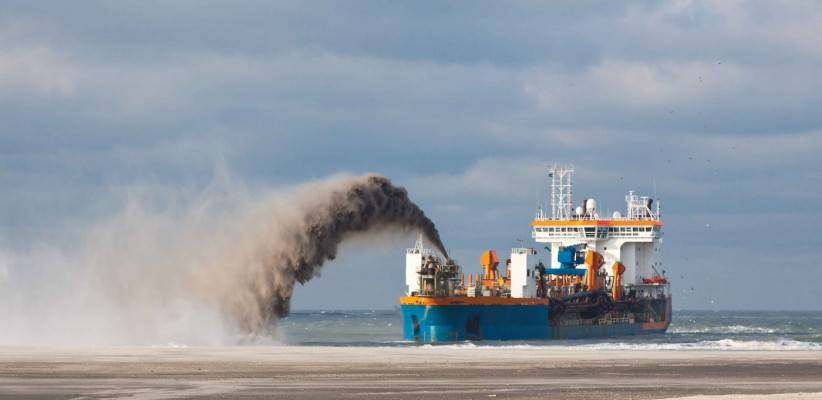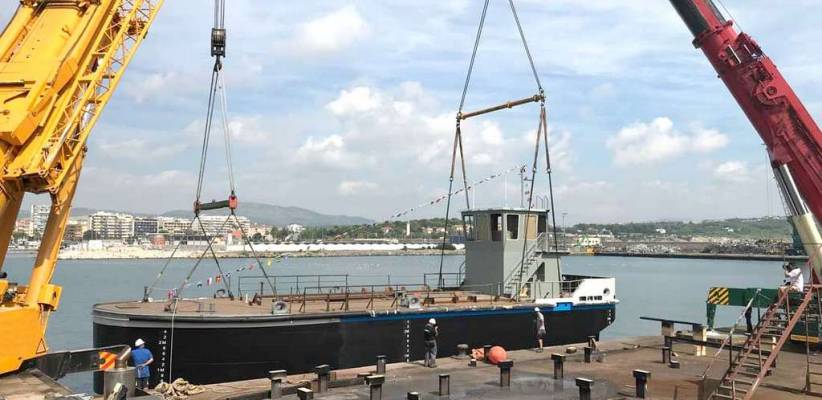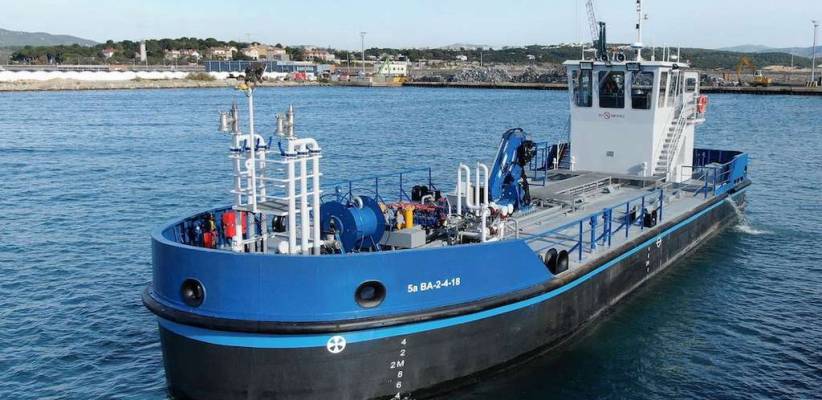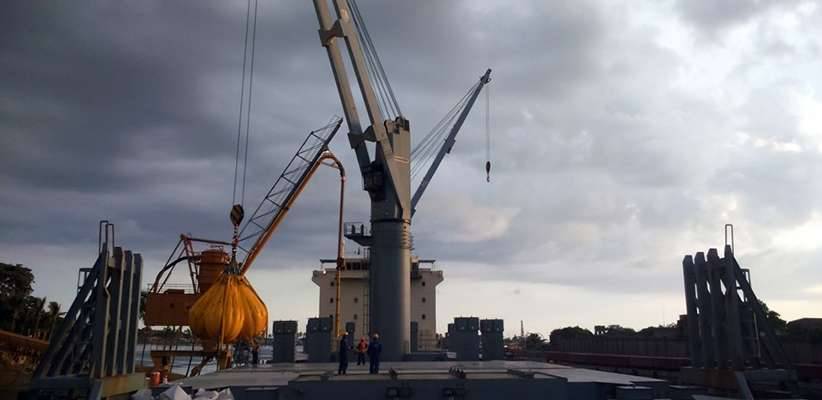Maritime transport has evolved significantly over the last century, creating diverse specialized vessels for various professional applications. Beyond impressive containerships and supertankers, numerous types of vessels serve specific maritime purposes across global waters. This guide examines the different maritime vessel classifications, their key characteristics, and their roles in modern shipping and naval operations.
Cargo vessels for international goods transport
General cargo vessels
These fundamental multipurpose ships transport diverse cargo types. While versatile for carrying both dry and irregular goods, they aren’t designed for container transportation. Their flexibility makes them valuable for mixed-cargo shipping routes where specialized vessels wouldn’t be cost-effective.
Bulk carriers
Designed for loose cargo transportation including grains, cement, minerals, and similar materials, bulk carriers feature large cargo holds optimized for efficient loading and unloading of unpacked goods. Their versatility across different bulk commodities makes them essential workhorses in the shipping industry.
Containerships
As the name suggests, these vessels specifically transport standardized shipping containers. They dominate maritime trade due to their efficiency and the global standardization of container dimensions. Modern containerships range from smaller feeder vessels to massive ships carrying thousands of TEUs (Twenty-foot Equivalent Units).
Roll-on Roll-off (Ro-Ro)
Ro-Ro vessels transport wheeled cargo including automobiles and trailers. Their distinctive bow or stern gates (sometimes both) function as loading ramps for vehicles. This design eliminates crane requirements, enabling faster port turnaround times compared to conventional cargo operations.
Reefer ships
These temperature-controlled vessels primarily transport perishable goods like fruits and vegetables. Built for higher speeds than typical cargo ships, reefer vessels minimize transit time for sensitive cargoes while maintaining precise climate conditions throughout the journey.
Oil tankers
Designed for petroleum transportation, these specialized vessels can carry up to two million barrels of oil. Their size often requires offshore loading and unloading through specialized equipment rather than traditional port docking.
Supertankers
Essentially larger versions of standard oil tankers, supertankers offer significantly greater capacity for crude oil transportation. These massive vessels represent some of the largest human-made moving objects on earth.
Liquefied gas carriers
Featuring distinctive spherical tanks on their decks, these specialized vessels transport liquefied natural gas (LNG) under controlled pressure and temperature conditions. Their unique design accommodates the special handling requirements of gaseous cargoes in liquid form.
Chemical carriers
Similar to oil tankers but smaller, chemical carriers transport hazardous chemical cargoes. They feature specialized containment systems, safety equipment, and segregated tanks to prevent dangerous interactions between different chemical products.
Livestock carriers
These specially adapted vessels transport live animals with ventilation systems and dedicated areas for food and water. Their design focuses on animal welfare during ocean transit, with features that maintain appropriate environmental conditions.
Heavy-lift cargo vessels
Designed for oversized or exceptionally heavy items like large machinery components or other vessels, these specialized ships often feature reinforced decks and powerful cranes to handle unusual cargo that won’t fit in standard shipping containers.
Semi-submersible vessels
Also known as Flo-Flo (Float-on Float-off) vessels, these remarkable ships partially submerge to load oversized cargo like oil rigs or other ships. After positioning the cargo above their deck, they resurface by emptying ballast tanks, lifting the cargo for transport.
Maritime maneuver vessels
Dredgers
These specialized vessels remove material from the seabed for harbor maintenance, land reclamation, or underwater excavation. Their size and specifications vary based on project requirements, featuring equipment like suction pipes, mechanical scoops, or cutting mechanisms.
Logistic support vessels
Support vessels transport essential supplies including fuel, drinking water, spare parts, food, ammunition, and medical supplies to active fleets. Their presence extends fleet operations without requiring port visits, supporting both commercial and military maritime activities.
Tugboats
These powerful vessels assist other ships with port maneuvering through pushing or pulling operations. Tugboats also tow barges, disabled vessels, and other floating structures. Despite their small size, they generate tremendous propulsion force relative to their dimensions.
SYM Naval offers specialized tugboat construction services, creating vessels tailored for harbor assistance, pollution control, and other maritime support functions. Their tugboats feature advanced propulsion systems optimized for maneuverability in confined spaces.
Cable laying vessels
Specialized in underwater cable installation and repair, these vessels deploy communication and power cables on the seabed. They feature equipment for precise cable positioning and protective burial operations across ocean floors.
Military vessels
Naval warships feature reinforced structures and weapons systems for defense operations. These vessels range from small patrol boats to massive aircraft carriers, each designed for specific tactical roles within naval forces.
Other professional maritime vessels
Waterway vessels
Designed for river and inland waterway operations, these vessels transport goods and passengers on non-oceanic routes. Their design accommodates shallow drafts and inland navigation challenges while maximizing cargo capacity within waterway limitations.
Cruises
Passenger ships offering recreational voyages with multiple destination stops, cruise vessels function as floating resorts with accommodation, dining, and entertainment facilities. Their design prioritizes passenger comfort and onboard amenities rather than cargo capacity.
Specialized vessels from SYM Naval
SYM Naval has developed several innovative vessel designs for specialized maritime applications:
The Castalia zero-emissions vessel represents an innovative platform addressing environmental concerns in modern shipping through sustainable propulsion technologies.
Their MARPOL harbor vessels specialize in pollution control and environmental protection within port areas, featuring equipment for oil spill response and waste management.
SYM Naval also produces auxiliary harbor vessels including multipurpose and mooring vessels that support port operations with versatile functionality for maintenance and ship handling tasks.
Their portfolio extends to custom vessel projects including support vessels, speedboats, lightweight vessels, and specialized maritime solutions tailored to specific requirements across various sectors.
Maritime vessel classifications
Maritime vessels fall into numerous categories beyond the major types listed above. Small craft include dinghies, skiffs, and tenders – typically under 16 feet and used for short-distance water travel or as auxiliary boats for larger vessels.
A collection of vessels operating together forms a fleet, whether for commercial, military, or recreational purposes. Fleet composition varies based on operational requirements, from naval battle groups to commercial shipping lines.
In sailing terminology, vessel size classifications include small sailing vessels like sloops (single-masted) and cutters, while larger sailing ships feature multiple masts with various sail configurations. Coastal vessels often bear regional names reflecting their local design heritage and specific operational conditions along shorelines.
Maritime transport continues evolving with technological advances, creating specialized vessels for emerging needs while improving efficiency, safety, and environmental performance across the global shipping industry.
